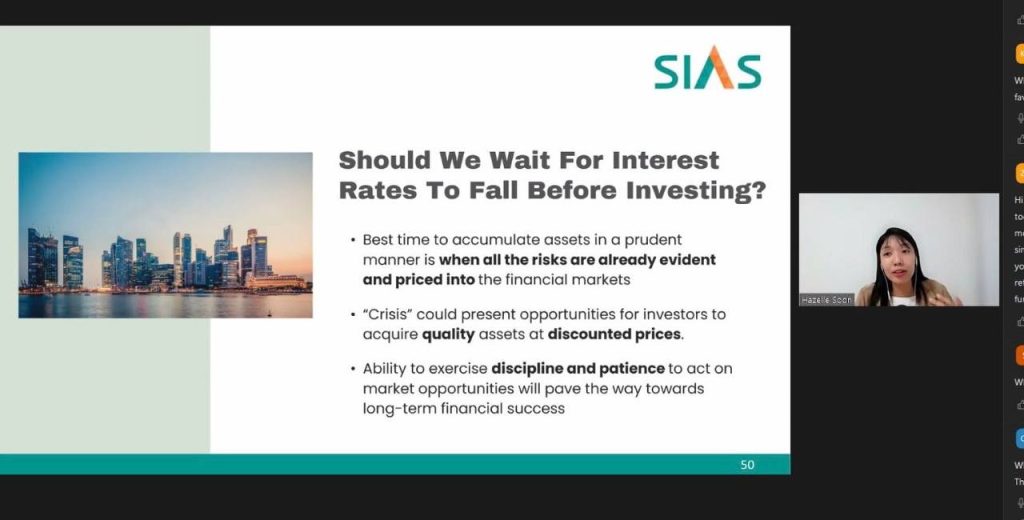
Hazelle
in Memos & Musings · 3 min read


Last Thursday, we hosted a webinar titled “REITs 101 – Navigating the Singapore REITs Landscape” in collaboration with SIAS, focusing on the challenges and opportunities in the turbulent S-REITs market over the past two years.
It was truly heartwarming to see the community’s eagerness to learn. The level of participation was exceptional, and the quality of questions raised was outstanding. We hope the attendees found the session insightful and beneficial.
Due to time constraints, we were unable to address some of the questions posed during the webinar. As such, we would like to address some of the outstanding queries in this blog post.
Q: Will Reit managers go rouge, who keeps the manager responsible to ensure inline to achieve maximum shareholders value?
The shareholders have the power to vote on significant matters, such as changes in the REIT’s structure or management. For instance, last year, Quarz Capital Asia, an activist investor and unit holder of Sabana REIT, requisitioned an EGM to vote on removing the external manager and replacing it with an internal one, claiming that the current REIT manager was not fully aligned with unitholders’ interests.
The trustee also oversees the REIT manager to ensure that the management of the REIT is conducted in the best interests of the unitholders and in compliance with the trust deed and applicable laws.
Additionally, regular reports by market analysts provide insights into the performance and strategies of the REIT. This scrutiny can influence the REIT manager’s actions to align with market expectations.
Q: Apart from sasseur reit, which reits have higher exposure to china?
CapitaLand China Trust, BHG Retail REIT, Dasin Retail Trust, EC World REIT etc.
Q: Some Reits give 3 types of distribution as dividends (taxable, tax-exempt, capital). Can elaborate?
In the case of Singapore REITs (listed on SGX), they are all non-taxable in the hands of unitholders. Quoting IRAS, “Income distribution from Real Estate Investment Trusts (REITs), except those received by individuals through a partnership in Singapore or related to the carrying on of a trade, business, or profession in REITs” are not taxable.
If you are looking at REITs listed on overseas stock exchanges, the taxable income distribution will be taxed at the prevailing rate based on the tax rules of the jurisdiction. Tax-exempt income distribution is exempt from tax in the hands of all unitholders. Do refer to the respective tax jurisdiction rules when venturing in overseas REIT investments.
Q: Which top 2 sectors you think the most promising when Fed starts to cut interest rate?
The overall performance of REITs is dependent on a combination of factors. While interest rates do play a part in the performance of the overall REIT sector, factors such as demand and supply of the properties, quality and relevance of the REIT’s properties play an equally vital role in the performance of the various REITs and the sub-sectors. Therefore, it would be challenging to assess the impact based solely on rate cut alone.
If you are looking at the resilience of the sub-sectors over the long term, certain sub-sectors such as industrial or retail REITs with portfolios centered on suburban malls could be more resilient over the long term compared to say, the hospitality sector which can be affected by the cyclical nature of travel.
Q: NAV and AUM of REIT ETF are dropping, because of more selling now?
NAV for ETF is computed based on the sum of the market value of the ETF’s holdings plus any cash that the ETF holds. Therefore, when the market price of the holdings go through a crash, we can observe a similar decline in NAV and prices for ETFs.
A decrease in AUM is driven by a net outflow of funds from the ETF. However, not all of the REIT ETFs listed on SGX have faced a decline in AUM. Lion-Phillip S-REIT ETF has reached an AUM of S$364 million in June 2024 which has grown over the past few years.
Q: Where to find risk reward ratio?
The risk-to-reward mentioned during the webinar is an assessment based on the technical stock chart prices where we aim to buy at certain price levels with a higher probability of a rebound from those levels. By buying at these levels, the risk-to-reward is tilted more in our favour as the upside potential outweighs the downside risks.
Q: There are concerns of lower occupancy rates of industrial parks, so industrial reits still investible?
Current estimates for the new supply of Singapore industrial properties in FY24 indicate the highest level in the past five years. This influx has led to a dip in occupancy rates across all types of industrial properties, including single-user factories, multi-user factories, warehouses, and business parks. Despite this industry-wide trend, it’s crucial to review the occupancy rates of individual REITs, as their performance can vary significantly. Some industrial REITs continue to maintain high and stable occupancy rates.
Additionally, other metrics such as rental reversion for specific industrial REITs should be considered. According to a study by DBS, the overall rental reversion trend for Singapore industrial properties is expected to remain healthy in the medium term. Currently, rentals for industrial properties are at an all-time high.
Therefore, when we evaluate the investability of a REIT, it requires a comprehensive assessment of various operational and financial performance aspects, rather than to make the assessment based on only a single factor.



About Hazelle
Chief trainer of The Moneyball Investors Playbook program and founder of The Joyful Investors, a financial education firm that seeks to help avid investors learn to invest better and make the journey a joyful one. I graduated with a first class honors in Bachelor of Accountancy from Nanyang Technological University (NTU) and started my auditing career in one of the Big Four. I believe that once we know how to build our wealth sustainably, we can then live our best lives ever.
Important Information
This document is for information only and does not constitute an offer or solicitation nor be construed as a recommendation to buy or sell any of the investments mentioned. Neither The Joyful Investors Pte. Ltd. (“The Joyful Investors”) nor any of its officers or employees accepts any liability whatsoever for any loss arising from any use of this publication or its contents. The views expressed are solely the opinions of the author as of the date of this document and are subject to change based on market and other conditions.
The information provided regarding any individual securities is not intended to be used to form any basis upon which an investment decision is to be made. The information contained in this document, including any data, projections and underlying assumptions are based upon certain assumptions and analysis of information available as at the date of this document and reflects prevailing conditions, all of which are accordingly subject to change at any time without notice and The Joyful Investors is under no obligation to notify you of any of these changes.
· · ·
Have you enjoyed this article? We’d be grateful if you would share this useful content to your friends who may benefit from it as well.




Pingback: REIT Posts of the Week @ 27 July 2024